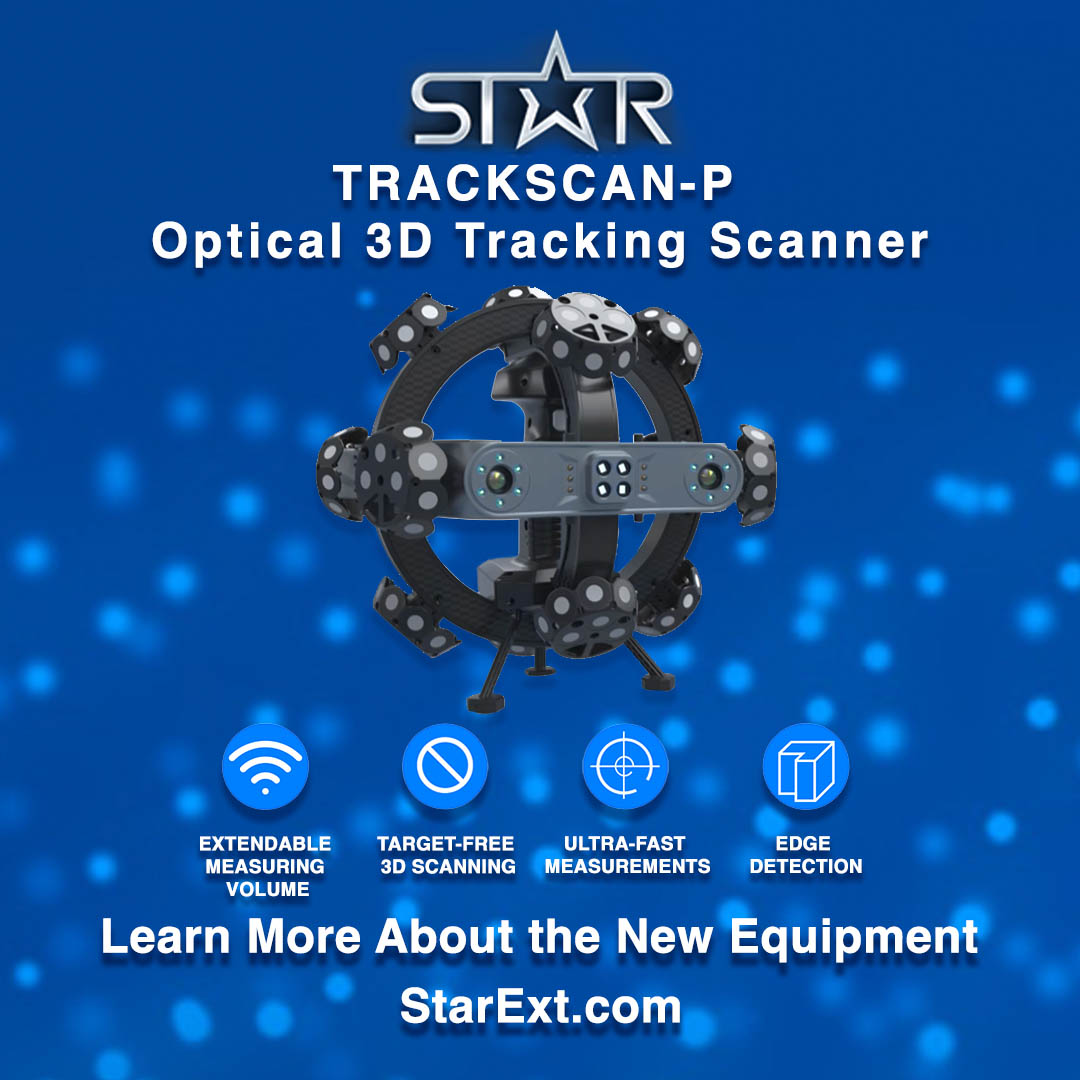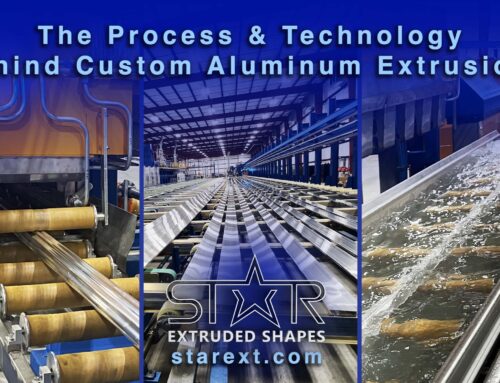
Star Brings You the TrackScan-P Optical 3D Tracking Scanner!
Engineered with intelligent optical tracking measurement and high-resolution cameras, TrackScan-P 3D Tracking Scanner can precisely measure aluminum extrusion parts without having to use reference targets. The optical 3D measurement system consists of a portable 3D scanner and an optical i-Tracker, this works well for 3D scanning large-scale objects. It can be widely applied for aluminum extrusion production contributing to quality control, product development, and reverse engineering. Furthermore it is applied in industries such as aerospace, automotive, rail transport, and mold use.
By combining it with additional modules, it can enable extendable applications. It can be paired with an auxiliary light module to inspect circles, grooves, and machined holes of stamping aluminum extrusion parts. With a tracking T-Probe, it enables precise contact measurements for edges, circles, and grooves.
What is a Track Scanner? How is it Used in the Aluminum Extrusion Industry?
A 3D track scanner, also known as a 3D optical measurement system, is a device that uses optical tracking and high-resolution cameras to capture 3D data of objects and convert them into digital models, making it ideal for aluminum extrusion manufacturing.
What are the Benefits of Using a Track Scanner for an Aluminum Extrusion?
- Precise edge detection
A 3D tracking scanner features a stand-out function of instant edge detection. As a result, users can inspect circles, grooves, and machined holes of stamping parts in various finishes on the site without having to import original CAD models.
The efficient edge detection is enabled because of its gray value measurement and optional auxiliary light module. Good measurements are ensured by delivering accurate and repeatable hole positions and diameters.
- Unrivaled-fast & detail-maker
By freely switching between multiple working modes, the TrackScan fits different scanning situations with an accuracy of up to 0.025 mm and an ultra-fast measurement rate of up to 2,600,000 measurements/s. Its 7 parallel blue laser lines perform well in capturing details. A single blue laser line aims to collect 3D data of deep holes and hard-to-reach areas efficiently.
- Optical tracking for instant 3D scanning
TrackScan-P 3D system’s optical tracking allows users to start scanning instantly without having to place targets, drastically improving efficiency and decreasing costs.
- Strong adaptability
Made from aerospace-grade materials, it is sturdy and reliable. Furthermore, it boasts a strong anti-interference capability to operate smoothly regardless of vibrations or thermal variations. Due to its advanced algorithm, TrackScan is robust in capturing 3D data of reflective and dark surfaces.

What is an Aluminum Extrusion Mold?
Mold is a cavity in which a fluid or molten substance is shaped into the desired product, which is commonly used in industrial manufacturing. Molds are made of various materials, such as sand, hardened steel, and plaster, depending on the application. The quality of molds directly affects the quality of products made in molds.
3D Scanning Improves Efficiency on Mold Building
With the precision requirements for mold manufacturing increasing, it is vital for mold builders to ensure the molds created are high-quality and secure their stability. This is where portable and highly precise 3D scanners come in to capture full-filed data of molds to identify their deviations accurately and streamline inspection and measurement workflows. 3D scanning can be used in mold manufacturing, mold inspection, mold trial, and more.

Mold Design
A CAD model of a mold can be quickly generated by 3D scanning to facilitate further development and mold optimization. 3D scanning helps reduce the need for mold modification, shorten delivery time, and greatly improve the efficiency of mold design.

Mold 3D Inspection
Quality assessment of mold refers to FAI (first article inspection) and quality control. A 3D scanner can assist mold builders to perform rapid quality assessments in the manufacturing stage. The 3D software provides accurate data support for deviation correction by comparing the 3D model with the original CAD.

Mold Database Construction
The 3D data of molds can be archived by 3D scanning physical objects. This helps effectively manage and process the product’s data, drawings, and documents. Portable 3D laser scanners also enable engineers and professionals to share and search 3D data conveniently.
How Does a 3D Laser Scanner Enhance Product Development for an Aluminum Extrusion?
- 3D scan: Record mockups of different versions
- Generate 3D models: CAD models for instant viewing and archiving
- Revise the design: Data captured serves as guidance for design revision and development
- First article inspection (FAI): Verify the first part produced against the original 3D model
Traditional Gauge vs 3D Scanner
Traditional Inspection Gauge:
- Tedious workflows
- Limited data collection
- Inefficient measurement
- Large footprint required to store tools
3D Scanner:
- Precise measurement
- Ultra-fast measurement rate
- Full-field data collection
- Immune to plant floor vibrations
- Intuitive reports
- Compact size and high portability
What Does Reverse Engineering Mean?
Reverse engineering, also known as backward engineering, is a process of measuring a product and reconstructing it as a 3D model for product design when there is no original drawing available.
Easy Reverse Engineering Accelerates the Aluminum Extrusion Design Process
Engineers analyze and research a target product to deduce its structures and functions. This allows them to learn how the object works and recreate it or improve it with added enhancement or development. With the help of 3D scanners, high-precision 3D models can be produced for reverse engineering.
Watch a quick video with an overview of Star’s new in-house TrackScan-P Optical 3D Tracking Scanner HERE.
Star Extruded Shapes’ New 3D Scanner Allows Added Product Developments Options and Quality Assurance
This equipment helps to further expand their turn-key services under one roof. Their engineering team can work with you one-on-one to develop and create custom aluminum extrusion fabrication, to maximize the quality and efficiency of your part.
Are You Ready to Get the Conversation Started?
Still want to know more about the aluminum extrusion design process? Contact our team today to discuss what will be the best profile, process, and get a quote.
Give Star Extruded Shapes a “follow” on the socials!
Facebook: https://www.facebook.com/profile.php?id=100063753529991
LinkedIn: https://www.linkedin.com/company/star-extruded-shapes





